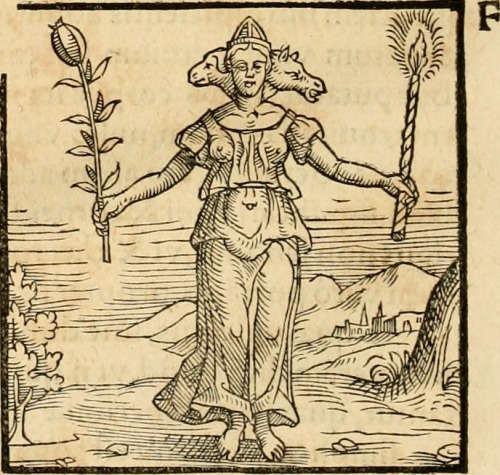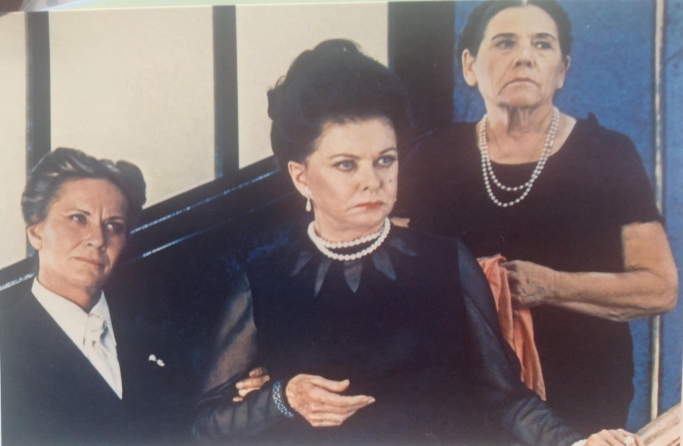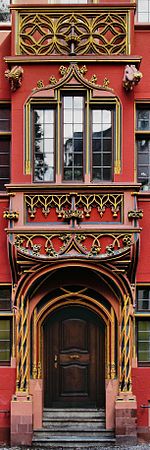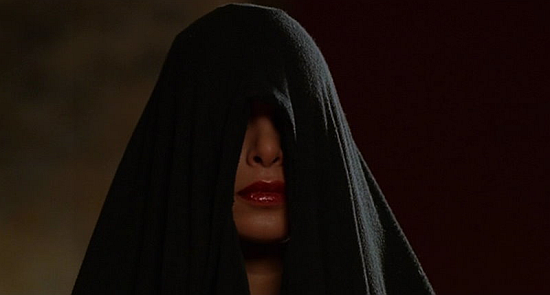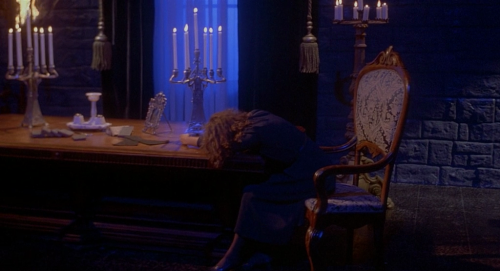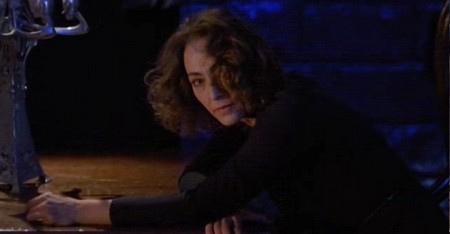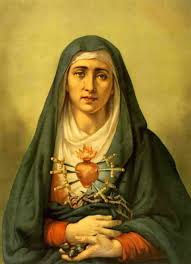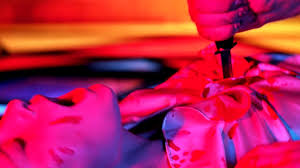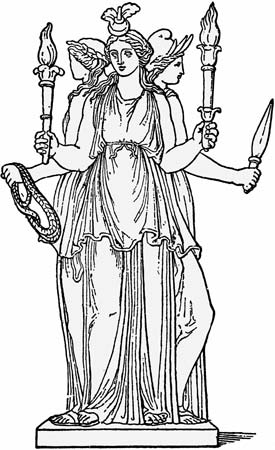By H.B.G.
In Part 2, We continue to think way too much about Suspiria, witchcraft and The Three Mothers…
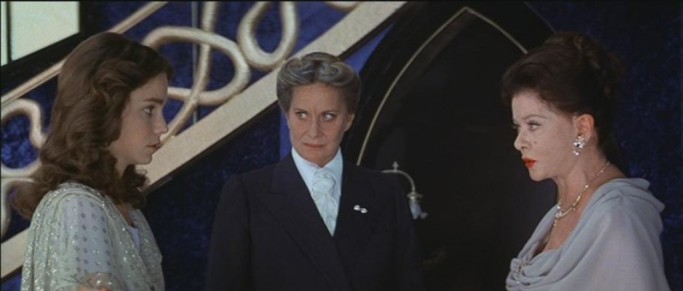
Jessica Harper, Alida Valli and Joan Bennett in SUSPIRIA, 1977
In Part 1 of this article we mentioned how the sensitive and melancholy Romantic Era essayist Thomas De Quincey channeled the concept of The Three Mothers (used later by Dario Argento in his Three Mothers Trilogy) through his own opium expanded brain in his work Levana and Our Ladies of Sorrow, where he named them as Mater Lachrymarum, Mater Suspiriorum and Mater Tenebrarum. We also introduced The Three Mothers and hinted at their associations with a deeper layer of mythic origins. Patience please as we prepare to dive deep into the Inferno and take a deeper look at The Devil in the Details…

Dario Argento plagued by Demons? Or, ‘Orestes Pursued by the 3 Furies,’ by William-Adolphe Bouguereau. The Furies/Erinyes share many attributes with Hekate (triplicity, the underworld, torches and serpents). Much of The Three Mothers may be seen in their relentless pursuit to torment their victims.
The Trine
The Three Mothers in Suspiria (1977), Inferno (1980), and Mother of Tears (2007) are a dark feminine trinity akin to female triads known throughout world mythology, literature and religion who are directly referenced in Suspiria’s sequels: The Fates (the Moirai, The Parcae), The Muses, The Graces, The Graeae, The Morrígan, The Sirens, The Norns, The Erinyes/Furies, The Harpies and The Gorgons. Also there are The Three Witches from Shakespeare’s Macbeth, 3 Fairy Godmothers in folktales, The Three Marys at the Empty Tomb in Christian tradition, as well as the Tridevi in Hinduism.
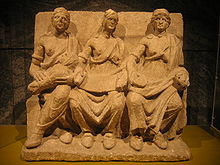
The Three Mothers, each sister bares her right breast. East France, late Roman period.
Interestingly, in direct relation to Suspiria and the Frieburg region of Germany, there was a female trinity worshipped in Germanic and Celtic regions of pre-Christian Roman Europe commonly referred to as The Matres or Matronae. (The Mothers or The Matrons). Data on the widespread cult of The Three Mothers, or Matres, is limited as their cult was viciously suppressed by the incursion of Christianity; but they often appear together in surviving votive shrines, occasionally each one bearing her right breast as in the shrine pictured above. But that’s a small detail which hardly relates to Dario Argento’s Three Mothers Trilogy, ….right?

The Mother of Tears, aka La Terze Madre (The Third Mother in Argento’s native Italian). Right breast bared.
Uncanny coincidence, innit?
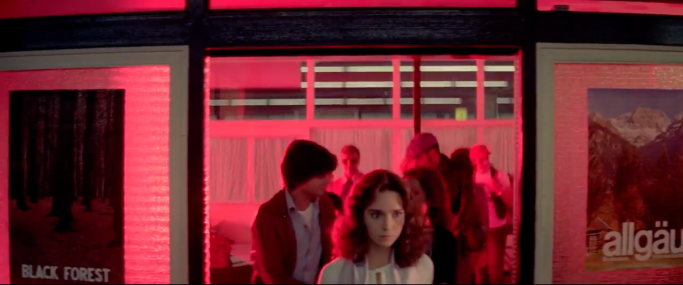
From the very start of SUSPIRIA we are situated in the fairy tale world of The Black Forest. Note the poster at left as Suzy Bannion (Jessica Harper) steps from the airport terminal.

Shrine to The Three Mothers, 2nd century, Germany
The Black Forest near Freiburg Germany seems an appropriate location for the story in Suspiria. It is often associated with the Brothers Grimm fairy tales and is not far from known sanctuary sites to the Three Matres or Matronae.
“Matronae altars include an abundance of floral and faunal symbols, such as trees, branches and flowers, birds perched in branches, cornucopias, goats, snakes wound around tree trunks, and scenes of sacrifice. All these suggest strong fertility and chthonic connections.”
– ‘The Cult of The Matronae In the Roman Rhineland’ by Alex G. Garman
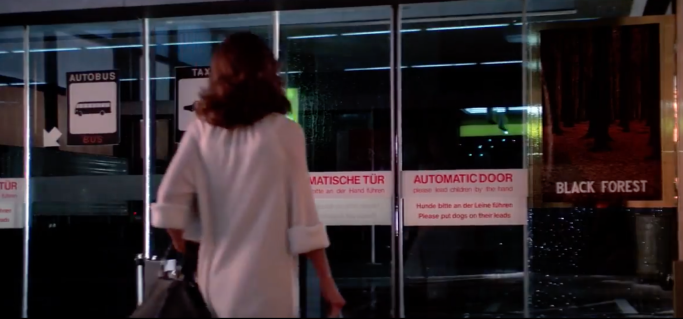
In case you missed it, we are reminded we are in The Black Forest as Suzy leaves the airport and enters the dark stormy night which begins her harrowing journey. Note poster at right, placing us firmly in the fairy tale realm of the supernatural.
“The altars show the Matronae holding fruit, bread, money, and in one case spinning material.” The abundance and wealth symbolism is obvious. The spinning material perhaps links them directly to the power of The Three Fates: Clotho spun the “thread” of human fate, Lachesis dispensed it, and Atropos cut the thread, thus determining the moment of death for each individual.

“If the Fates allow…” The Three Fates by Paul Thumann. In center is Clotho (as Maiden) spinning the thread of life, at right is Lachesis (as Mother) who dispenses it, at left is grim Atropos (as Crone) with her shears ready to snip the thread of life.
Triplicity is a common motif in myth and magic…
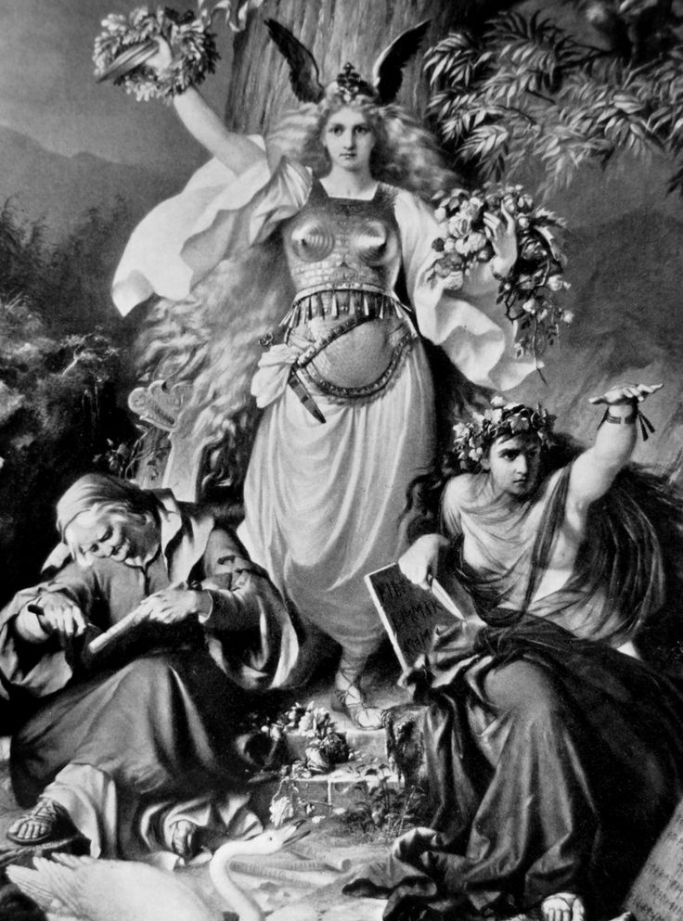
The Norns in Norse mythology are female beings who rule the destiny of gods and men. They are usually depicted as stationed at the roots of The World Tree or Axis Mundi. (Artist uncertain. Please enlighten us.)
De Quincey traversed oceans of deepest darkness in his explication of Levana and our Ladies of Sorrow.
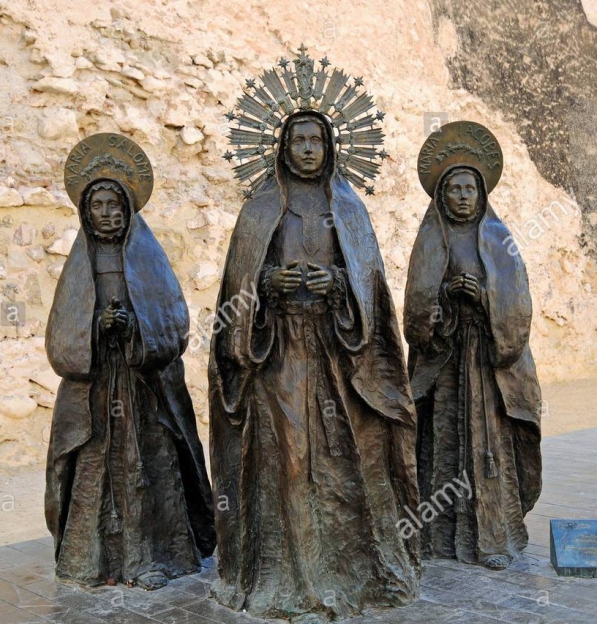
The funereal Three Marys appear at the empty sepulcher in Christian tradition. Group of sculptures by the sculptor Juan Jose Quiros, Elche, Province of Alicante, Spain. Compare with the image below.
Interesting to note how the birth of Christ was attended by 3 Wise Men, whereas his death/resurrection (re-birth?) was attended by 3 women, or funereal midwives. We are reminded of the European fairy tales, like Sleeping Beauty, (in which a spinning wheel figures) and legends like King Arthur, where births and deaths are attended by 3 fairy godmothers or three women of power.
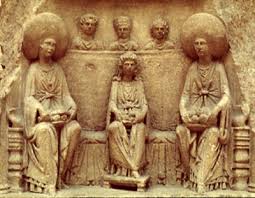
Detail from Altar to the Matronae Aufaniae dedicated by Q. Vettius Severus, 164 CE. Rheinisches Landesmuseum, Bonn, Germany.
An unconscious memory seems to have taken hold upon the European mind from the earliest days of human spiritual culture which is echoed throughout art and literature.
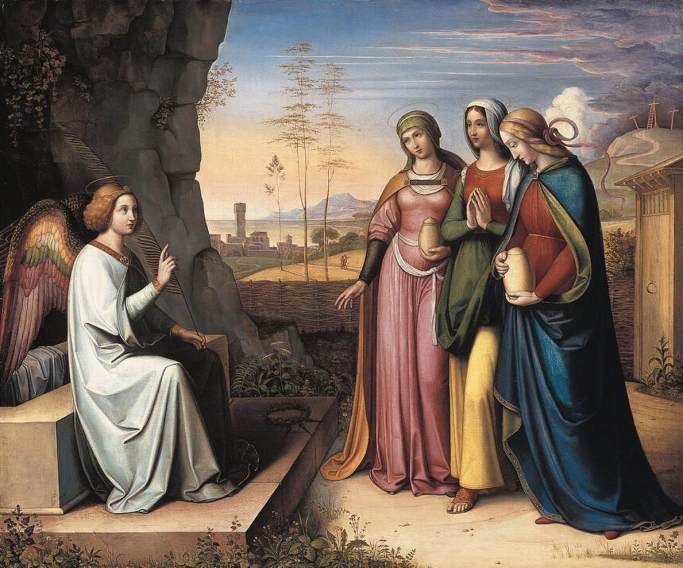
Peter von Cornelius – The Three Marys at the Tomb. Bearing jars of unguents for mortuary duties. Women in the ancient world often oversaw the preparation of the corpse as well as tending to sickness and childbirth, linking them with the powers of The Fates.
The ‘INFERNO’ of HECATE
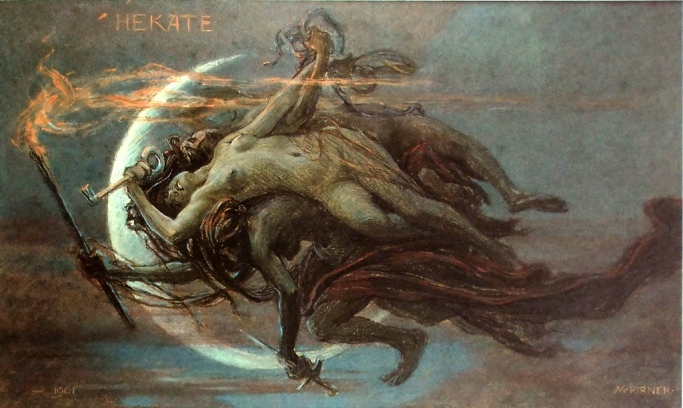
“Hekate” by Maximilian Pirner (1901). A singular work depicting the three-formed goddess soaring and twisting round through the night sky of the waning moon. In her multiple hands are key, torch, dagger, and what may be serpents or cords for binding.
One goddess we can easily associate (though not completely identify) with Suspiria‘s terrifying Three Mothers is Hecate, (or Hekate), of the Greeks and Romans, famous for her associations with witchcraft, the moon, magic, crossroads, doorways and thresholds, necromancy, childbirth, ghosts and unclean lunar rites of sacrifice and expiation, having magical, protective or apotropaic qualities. In the post-Christian writings of the Chaldean Oracles (2nd–3rd century CE) she was regarded with (some) rulership over the three worlds of earth, sea and sky – or heaven, earth and underworld – as well as a more universal role as Saviour (Soteira), Mother of Angels and the Cosmic World Soul. She was also lauded as Kourotrophos (nurse of children), Chthonia (of the earth/underworld), and as Phosphoros, and Lampadephoros (bringing or bearing light). Black animals, dogs in particular, were her preferred sacrificial animal.

Midnight sacrifice at the crossroads. Suspiria, 1977
Often referred to as Queen of the Witches or Queen of Hell (the Underworld), Hecate is an ancient goddess portrayed in classical literature as haunting crossroads and cemeteries, where she presided over uncanny midnight rites, with her dreadful nocturnal approach heralded by howling dogs. She was attended by a train of torch bearing nymphs from the underworld (the Lampades) who were said to cause madness, along with the ghosts of those unquiet dead who met their ends by suicide, murder or other sudden tragedy, or those who died without receiving the proper funeral rites.

Ghoulish, phosphorescent, unquiet dead – a victim of black magic (note the pins stuck in the eyes and the “pinning” of the wrists (in sacrilegious imitation of Christ) of Sarah (Stefania Cassini) the victim – definitely a member of Hecate’s tribe. Suspiria, 1977.
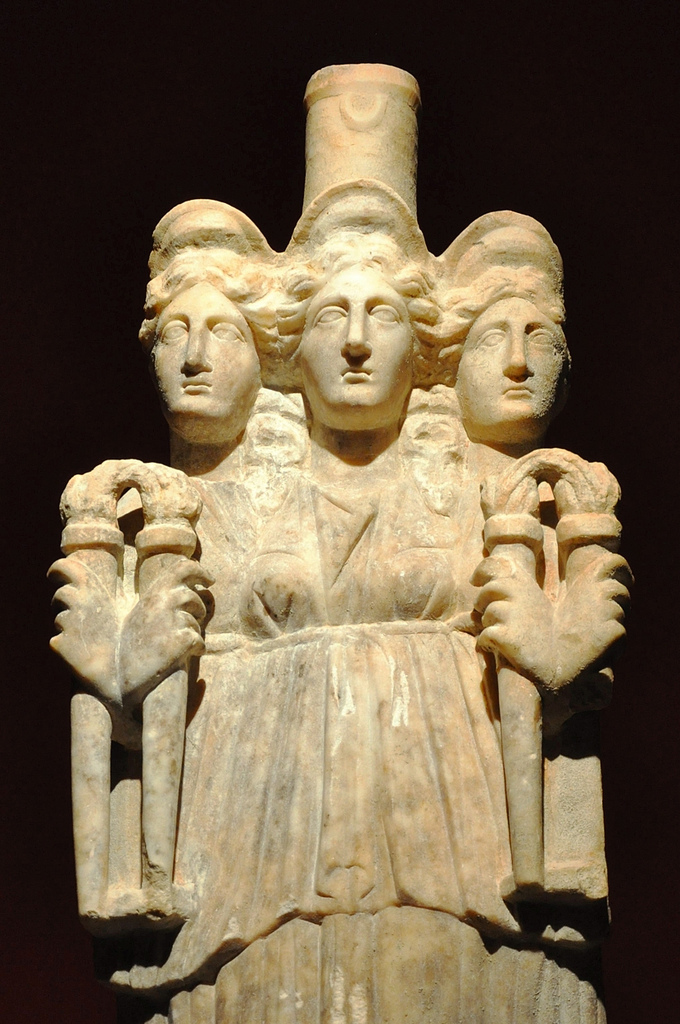
“Her head, turreted like that of Cybèle,” as De Quincey describes Mater Tenebrarum. An ancient statue of torch-bearing Hecate who also often appears with turreted head – linking her as The World Tree or Axis Mundi. This one adorned with lunar crescent. 3rd century A.D. on display in the Antalya Museum, Turkey.
Hekate’s common significant identifying attributes, other than her triplicity, are torches, keys, daggers, serpents, and cords/rope or scourges/whips. As “Holder of the Keys,” (Kleidotrophos) we see a definite connection to the Three Mothers as imagined by De Quincey as he describes Mater Lachrymarum and Mater Suspiriorum as keybearers (see Part 1 of this article). Her turreted crown, “like that of the goddess Cybele,” as De Quincey describes Mater Tenebrarum, symbolizes her jurisdiction – (Mother goddess as hypostasis of the World Tree or Axis Mundi) – over the heavens, earth and underworld, thus giving her triple power over the crossroads of the three worlds. She is also strongly identified or equated with the lunar goddess Artemis / Diana, as Diana Lucifera, She Who Brings Light. She is a popular goddess amongst modern Witches, Wiccans and Pagans.

The goddess Hecate wielding daggers, scourges and torches and flanked by serpents. From an engraved Roman gem
In Inferno (1980) the second film in Dario Argento’s Three Mothers Trilogy, the film opens with lingering shots of some common symbols of Hecate, the Greek and Roman goddess of witchcraft.
We see a dagger, 3 keys attached to an ornamental coral snake (venomous – “Red touch yellow, kill a fellow.”), as well as a book of arcane knowledge.
The character Rose Elliot (acted by Irene Miracle – what a magical name!) in Inferno has a natural inclination towards the occult as her taste in literature and jewelry indicate (notice her Eye of Wisdom necklace). Just before Rose dives into the submerged underground ballroom, she uses a lighter to illuminate her way through the darkened cellar; the torch is a common attribute wielded by night wandering Hecate.
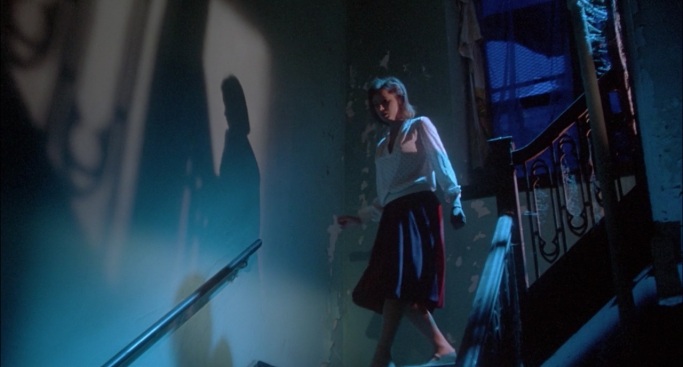
Rose Eliot (Irene Miracle) descends into the unconscious fear of the dark… only to be submerged in terror in Dario Argento’s Inferno.
This is the spirit venturing into the darkness of the Underworld. Indeed, it is her serpent ornamented keychain which drops into the aqueous subterranean realm of Mater Tenebrarum, the deep subconscious world of nightmares, thereby “unlocking” the way towards her fateful encounter with the supernatural. Her passage (initiation) into the Mysteries is a submersion into the womb-realm of the Dark Mother (Mater Tenebrarum) herself!
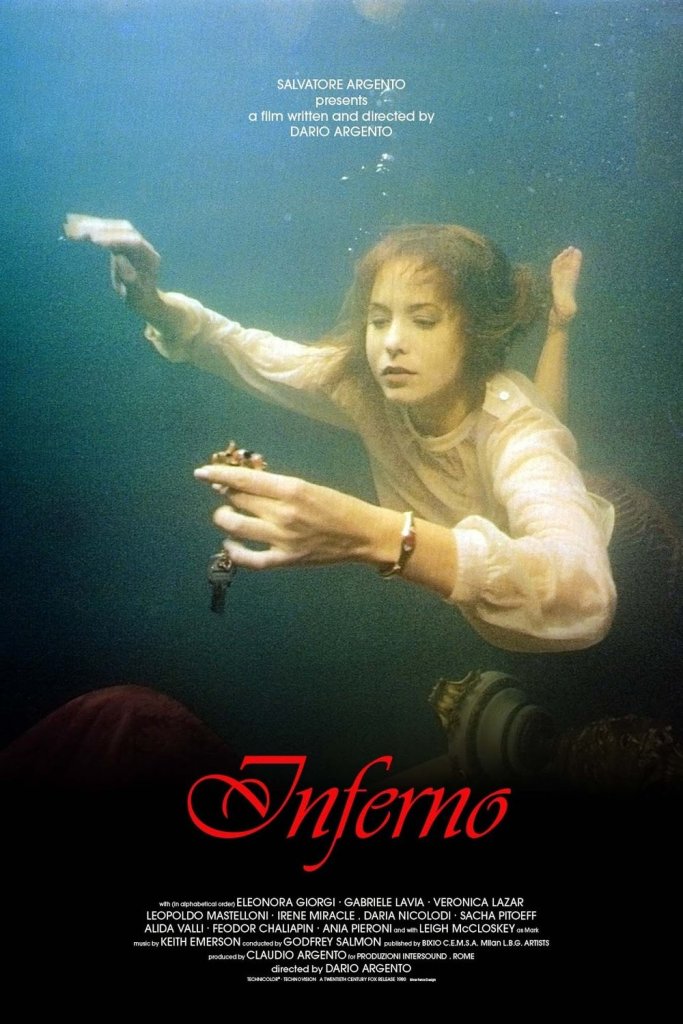
She attains the keys to occult wisdom by diving deep into the darkness. Serpent keychain – Serpent = Wisdom. The keys are to her own apartment within the House of Mater Tenebrarum, a true Temple of Darkness.
But perhaps her fate was already sealed from the moment she used the blade (symbol of Hecate) to unseal the first pages of the book The Three Mothers by Varelli; her curiosity unlocking forbidden secrets better left unknown. A type of premature C-Section made by a fledgling Handmaid of Darkness to birth herself – her own self-initiation – to the sacrificial mysteries of a sudden, terrifying death, thereby joining her spirit to the hordes of Hecate.

Hecate Triformis with scourge, key, cords, and torch, articles such as any professional midwife or witch may carry.
As a liminal goddess of crossroads and threshold guardian between the realm of the living and the dead, the mysterious accouterments of Hekate could serve purposes both mystical and practical. Symbolic tools of powers required, perhaps, for lighting the way along midnight excursions into restricted chambers of difficult childbirth, illness in extremis, death, or other health crises, such as wise women, herbalists or poisoners, midwives, abortionists or morticians (any of which may be labeled “witches”) may have required.
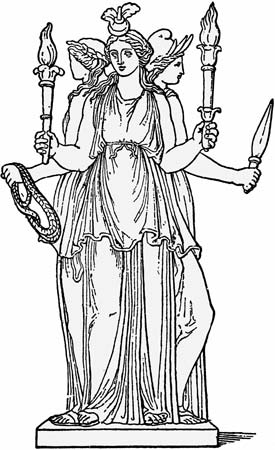
Hecate Triformis (another view of the statue above?) bearing torches, rope and dagger.
In the ancient world, the maternal and infant mortality rate, and other complications surrounding childbirth, was astronomical compared with our relatively safe and routine procedures today. Childhood death, amongst other pitiable or sorrowful themes, is a discernible motif in De Quincey’s somber writings.
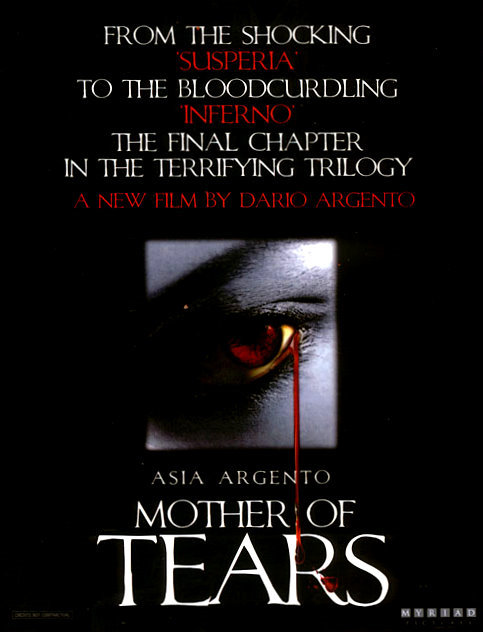
Ad for the final installment of Dario Argento’s Three Mothers Trilogy.
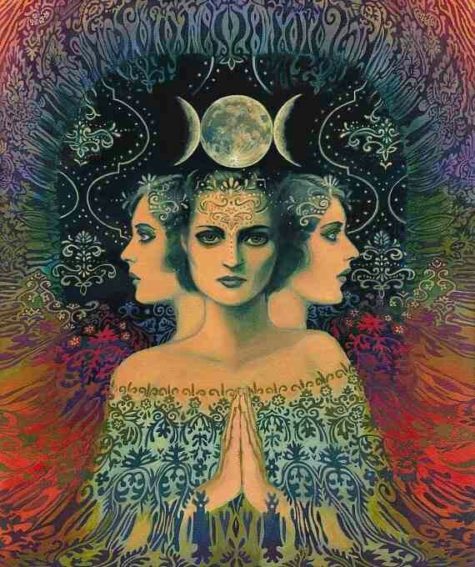
“The Moon – Goddess of Mystery” ~ by Emily Balivet
Join us next month for the third and final part of this article where we will complete our analysis of The Three Mothers in Argento’s Trilogy.
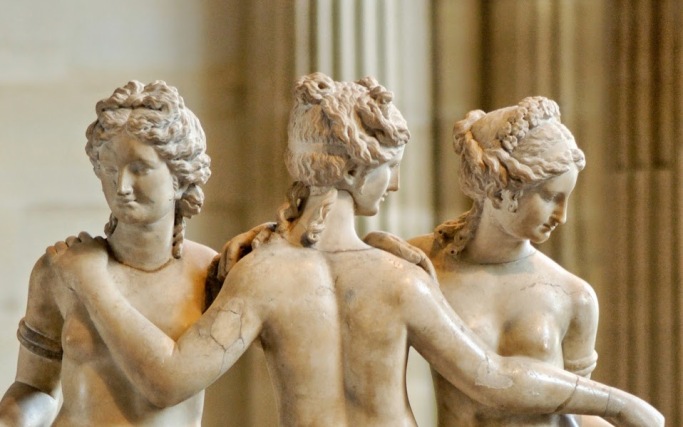
The Three Graces are the light side of the Trine. Goddesses associated with Charm, Beauty and Creativity; or Faith, Hope and Charity.







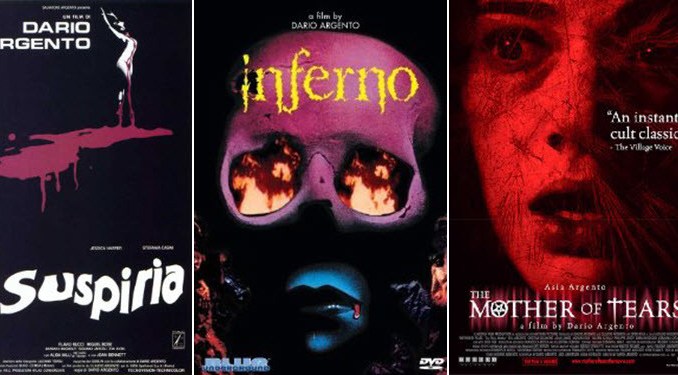 ‘Suspiria’ (1977) is a singular horror movie that has become a classic of modern cinema. It is impossible to overstate the impact this remarkable film – and the unique stylings it’s director Dario Argento – has had upon artists and writers since it’s release 40 years ago. The mysterious name of the film itself serves as a kind of wicked enchantment guaranteed to conjure sighs of awe and twinkles in the eyes of horror film buffs. In this special three part article we will stare long and deep into the dark, searching for The Devil in the Details in the art and mythos of Suspiria and attempt to reveal the weird links between horror film fantasy and genuine occult doctrine. In Part 1 we will introduce The Three Mothers and their origins for those yet unfamiliar, and deepen our understanding of them. Part 2 will connect these femmes fatale to the Triple Goddess of Witchcraft and her necromantic symbols and connections in Suspiria and it’s sequels Inferno and Mother of Tears. Part 3 will round it all out with The Three Mother’s taste for tears, misery and sacrifice.
‘Suspiria’ (1977) is a singular horror movie that has become a classic of modern cinema. It is impossible to overstate the impact this remarkable film – and the unique stylings it’s director Dario Argento – has had upon artists and writers since it’s release 40 years ago. The mysterious name of the film itself serves as a kind of wicked enchantment guaranteed to conjure sighs of awe and twinkles in the eyes of horror film buffs. In this special three part article we will stare long and deep into the dark, searching for The Devil in the Details in the art and mythos of Suspiria and attempt to reveal the weird links between horror film fantasy and genuine occult doctrine. In Part 1 we will introduce The Three Mothers and their origins for those yet unfamiliar, and deepen our understanding of them. Part 2 will connect these femmes fatale to the Triple Goddess of Witchcraft and her necromantic symbols and connections in Suspiria and it’s sequels Inferno and Mother of Tears. Part 3 will round it all out with The Three Mother’s taste for tears, misery and sacrifice.
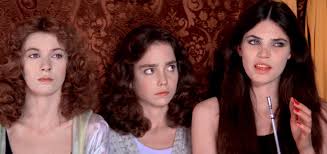
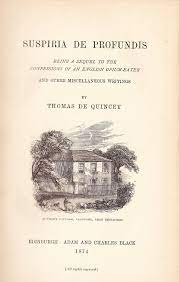 Suspiria‘s origins arise like an intoxicating vapor from the Chinese puzzle-box-like literary works of Romantic Era, British essayist Thomas De Quincey. His best known work: Confessions of an English Opium Eater, inaugurated the tradition of addiction literature in the West when it first appeared in 1822. Later he composed
Suspiria‘s origins arise like an intoxicating vapor from the Chinese puzzle-box-like literary works of Romantic Era, British essayist Thomas De Quincey. His best known work: Confessions of an English Opium Eater, inaugurated the tradition of addiction literature in the West when it first appeared in 1822. Later he composed 
